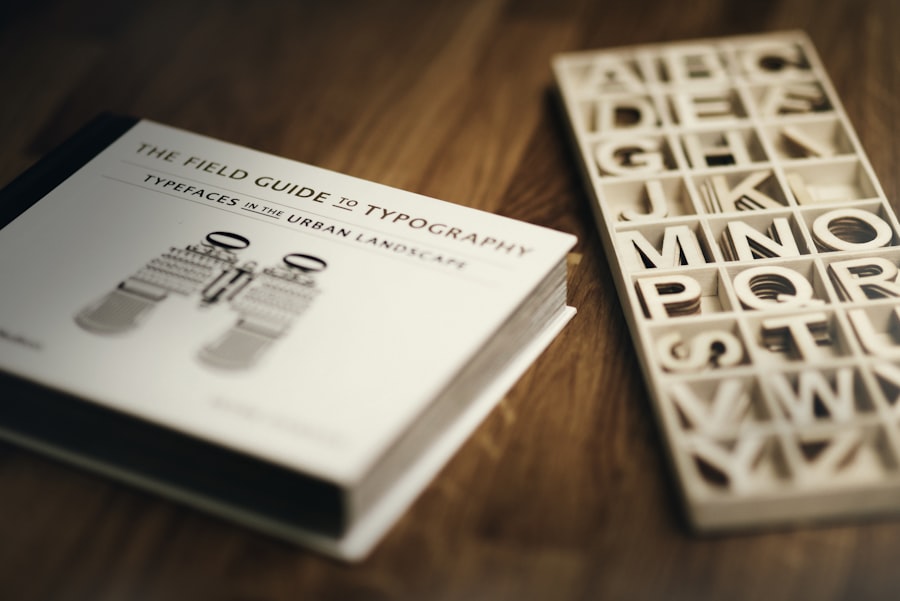
Reading comprehension is a fundamental skill that serves as the cornerstone of effective communication and learning. It involves not just the ability to decode words on a page but also the capacity to understand, interpret, and engage with the text. This skill is crucial across various domains, from academic success to professional development and personal enrichment.
In an age where information is abundant and often overwhelming, the ability to comprehend what one reads is more important than ever. It allows individuals to navigate complex ideas, discern facts from opinions, and engage critically with diverse perspectives. Moreover, reading comprehension fosters cognitive development.
Engaging with texts enhances vocabulary, improves critical thinking skills, and encourages empathy by exposing readers to different cultures and experiences. For students, strong reading comprehension skills are linked to better performance in all subjects, as they enable learners to grasp concepts, follow instructions, and synthesize information from multiple sources. In the workplace, effective reading comprehension can lead to improved job performance, as employees are better equipped to understand reports, manuals, and communications from colleagues.
Thus, mastering reading comprehension is not merely an academic exercise; it is a vital life skill that influences various aspects of personal and professional growth.
Key Takeaways
- Reading comprehension is essential for understanding and interpreting written information in various contexts.
- Strategies for reading comprehension include active reading, making connections, and summarizing key points.
- Mastering fiction texts involves analyzing characters, plot, and themes to gain a deeper understanding of the story.
- Mastering non-fiction texts requires identifying main ideas, supporting details, and author’s purpose.
- Mastering poetry and prose involves analyzing literary devices, tone, and theme to interpret the deeper meaning of the text.
- Mastering academic texts involves understanding complex concepts, synthesizing information, and critically evaluating arguments.
- Mastering technical texts requires understanding specialized vocabulary, diagrams, and technical processes.
- Applying reading comprehension skills to real-life situations involves making informed decisions, solving problems, and effectively communicating ideas.
Strategies for Reading Comprehension
To enhance reading comprehension, several strategies can be employed that cater to different learning styles and preferences. One effective approach is the use of active reading techniques. This involves engaging with the text through annotations, highlighting key points, and summarizing sections in one’s own words.
By actively interacting with the material, readers can reinforce their understanding and retention of information. For instance, when reading a complex article, jotting down questions or reflections in the margins can help clarify thoughts and deepen engagement with the content. Another valuable strategy is the practice of previewing texts before diving into them.
This can include skimming headings, subheadings, and any highlighted or bolded terms to get a sense of the structure and main ideas. By familiarizing oneself with the layout and key concepts beforehand, readers can create a mental framework that aids in comprehension as they read more thoroughly. Additionally, employing graphic organizers such as mind maps or charts can help visualize relationships between ideas, making it easier to synthesize information and draw connections between different parts of the text.
Mastering Fiction Texts

Fiction texts present unique challenges and opportunities for readers seeking to enhance their comprehension skills. Engaging with narrative structures, character development, and thematic elements requires a nuanced understanding of storytelling techniques.
Readers can benefit from tracking character motivations, relationships, and transformations throughout the story. For example, in a novel like “Pride and Prejudice” by Jane Austen, examining Elizabeth Bennet’s evolving perceptions of Mr. Darcy can reveal deeper themes of social class and personal growth.
Additionally, paying attention to literary devices such as symbolism and foreshadowing can enrich the reading experience. Recognizing how authors use these tools to convey deeper meanings allows readers to appreciate the layers within a narrative. For instance, in “The Great Gatsby” by F.
Scott Fitzgerald, the green light at the end of Daisy’s dock symbolizes Gatsby’s unattainable dreams and desires. By identifying such symbols and their implications, readers can engage more profoundly with the text and uncover its underlying messages.
Mastering Non-Fiction Texts
| Metrics | Results |
|---|---|
| Number of Non-Fiction Texts | 25 |
| Average Reading Level | 8th grade |
| Number of Chapters | 10 |
| Word Count | 15,000 |
Non-fiction texts often aim to inform or persuade, making comprehension strategies slightly different from those used for fiction. One effective approach is to identify the author’s purpose and perspective. Understanding whether the author seeks to inform, argue a point, or present research findings can guide readers in interpreting the material accurately.
For instance, when reading a scientific article on climate change, recognizing that the author aims to present empirical data rather than personal anecdotes helps frame the reader’s expectations and focus. Another strategy for mastering non-fiction is to break down complex information into manageable parts. This can involve summarizing sections or creating outlines that highlight key arguments and supporting evidence.
For example, when engaging with a historical text detailing events leading up to World War II, organizing information chronologically can clarify cause-and-effect relationships and enhance overall understanding. Furthermore, integrating critical thinking by questioning the validity of sources and considering alternative viewpoints fosters a more comprehensive grasp of non-fiction material.
Mastering Poetry and Prose
Poetry presents a distinct set of challenges for readers due to its often abstract language and condensed form. To master poetry comprehension, readers should focus on understanding imagery and emotional resonance. Analyzing how poets use language to evoke feelings or paint vivid pictures can deepen appreciation for their craft.
For instance, in Robert Frost’s “The Road Not Taken,” exploring the imagery of diverging paths allows readers to reflect on choices and their implications in life. Additionally, engaging with the rhythm and sound of poetry can enhance comprehension. Reading aloud can help capture the musicality of verses while also clarifying meaning through intonation and emphasis.
This technique is particularly useful in works by poets like Emily Dickinson or Langston Hughes, where rhythm plays a crucial role in conveying emotion and theme. By immersing oneself in the auditory aspects of poetry, readers can unlock layers of meaning that may remain hidden in silent reading.
Mastering Academic Texts

Developing Critical Reading Skills
Academic texts often require a higher level of critical engagement due to their complexity and specialized vocabulary. To navigate these texts effectively, readers should develop skills in identifying thesis statements and main arguments.
Understanding the Central Claim
Understanding the central claim of an academic paper provides a framework for evaluating supporting evidence and counterarguments presented by the author. For example, when reading a research article on educational psychology, pinpointing the thesis allows readers to assess how well the subsequent sections support this claim.
Familiarizing with Academic Conventions
Moreover, familiarizing oneself with academic conventions such as citations and references is essential for comprehending scholarly work. Recognizing how authors build upon existing literature through citations helps contextualize their arguments within broader academic discussions.
Utilizing Tools for Research
Additionally, utilizing tools like annotated bibliographies can aid in tracking sources and understanding their relevance to one’s own research or study goals.
Mastering Technical Texts
Technical texts are characterized by their specialized language and focus on specific fields such as engineering, medicine, or computer science. To master comprehension in these areas, readers must develop familiarity with jargon and terminology unique to each discipline. This often involves creating glossaries or reference sheets that define key terms encountered during reading.
For instance, when studying a technical manual for software development, understanding terms like “API” (Application Programming Interface) or “debugging” is crucial for grasping instructions effectively. Another strategy for navigating technical texts is to focus on diagrams, charts, and illustrations that accompany written content.
For example, in an engineering textbook discussing structural integrity, analyzing diagrams that illustrate load distribution can clarify theoretical principles discussed in the text. By integrating visual literacy with textual analysis, readers can achieve a more comprehensive understanding of technical materials.
Applying Reading Comprehension Skills to Real-Life Situations
The skills developed through mastering reading comprehension extend far beyond academic settings; they are invaluable in everyday life as well. For instance, being able to comprehend legal documents or contracts is essential for making informed decisions in personal or professional contexts. When entering into agreements such as leases or employment contracts, individuals must be able to parse complex language and identify key terms that could impact their rights or responsibilities.
Furthermore, reading comprehension plays a significant role in media literacy—a critical skill in today’s information-saturated environment. The ability to evaluate news articles or social media posts for bias, credibility, and accuracy is essential for informed citizenship. By applying comprehension strategies learned through literature or academic texts to news consumption, individuals can better navigate misinformation and engage thoughtfully with current events.
In conclusion, reading comprehension is an essential skill that permeates various aspects of life—from academic success to informed decision-making in everyday situations. By employing targeted strategies across different genres of text—be it fiction, non-fiction, poetry, academic writing, or technical manuals—readers can enhance their understanding and engagement with written material. Ultimately, these skills empower individuals not only to absorb information but also to think critically about it in an increasingly complex world.
If you are interested in exploring different literary devices and techniques, you may enjoy reading the article Plot Device: Flashback and Foreshadowing. This article delves into how authors use these tools to enhance the storytelling experience and engage readers in a deeper level of comprehension. By understanding how these devices work, readers can better analyze and interpret the texts they encounter, improving their overall reading comprehension skills.
FAQs
What are reading comprehension strategies?
Reading comprehension strategies are techniques and methods used to help readers understand and interpret texts. These strategies can include summarizing, making connections, visualizing, asking questions, and making inferences.
Why are reading comprehension strategies important?
Reading comprehension strategies are important because they help readers engage with and understand the text they are reading. These strategies can improve overall reading comprehension, critical thinking skills, and retention of information.
What are some reading comprehension strategies for different types of texts?
– For narrative texts: Predicting, visualizing, making connections, and summarizing.
– For expository texts: Identifying main ideas, making inferences, asking questions, and synthesizing information.
– For persuasive texts: Analyzing arguments, evaluating evidence, and identifying author’s purpose and bias.
How can reading comprehension strategies be taught?
Reading comprehension strategies can be taught through explicit instruction, modeling, guided practice, and independent practice. Teachers can also use graphic organizers, think-alouds, and discussion to help students learn and apply these strategies.
How can reading comprehension strategies be applied to different grade levels?
Reading comprehension strategies can be adapted and scaffolded to meet the needs of students at different grade levels. For younger students, more concrete and visual strategies may be used, while older students may benefit from more complex and abstract strategies.



